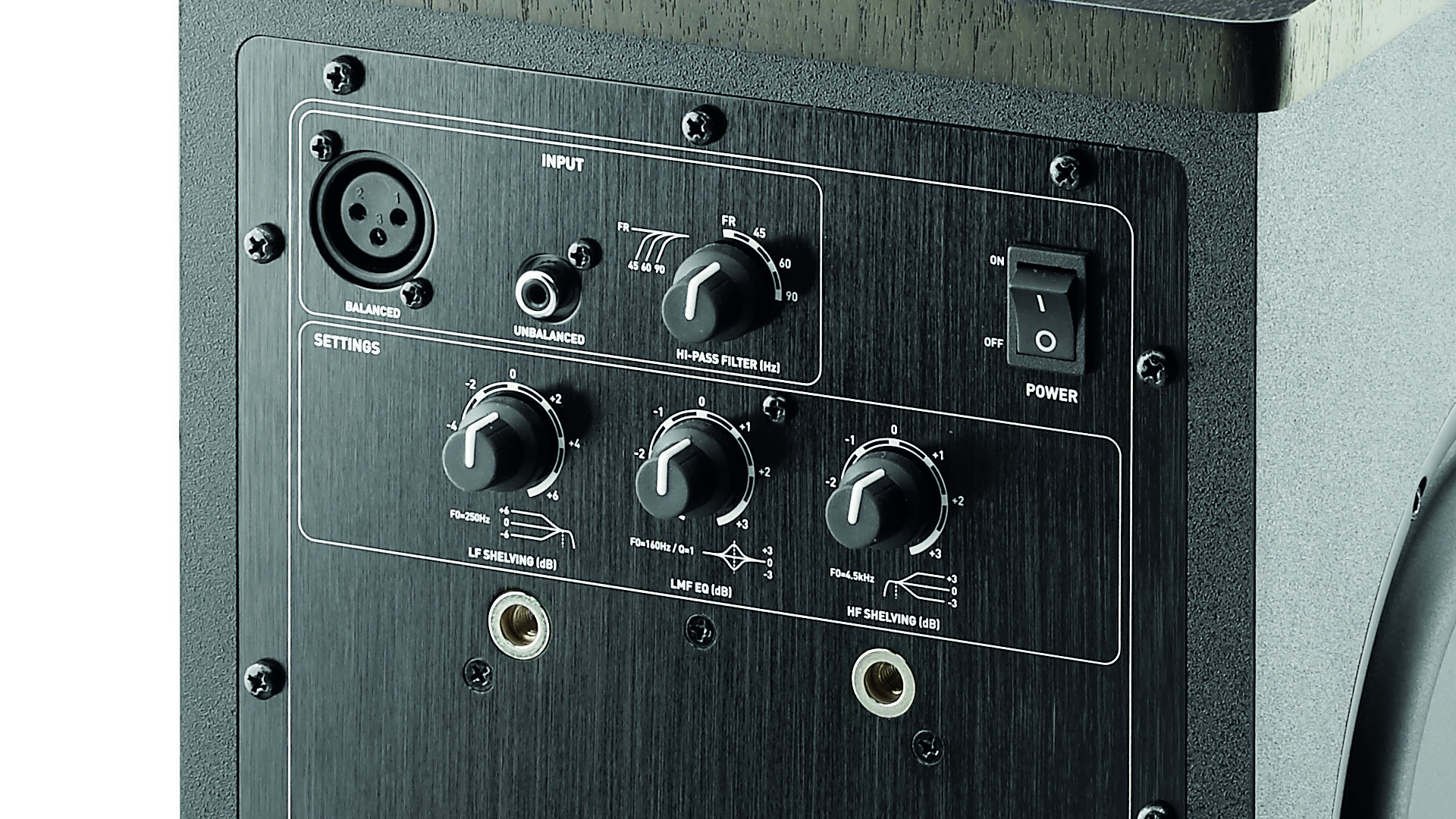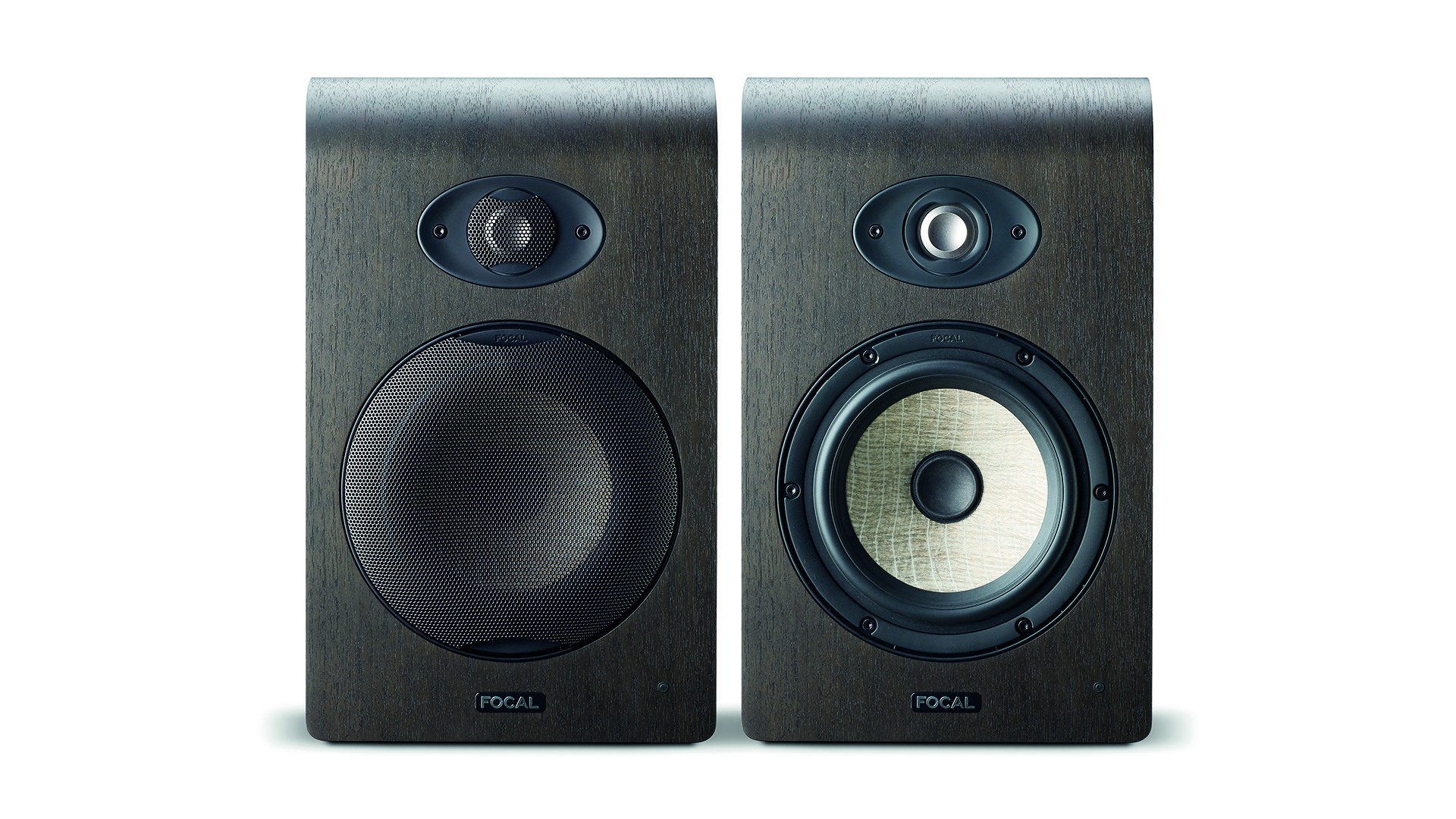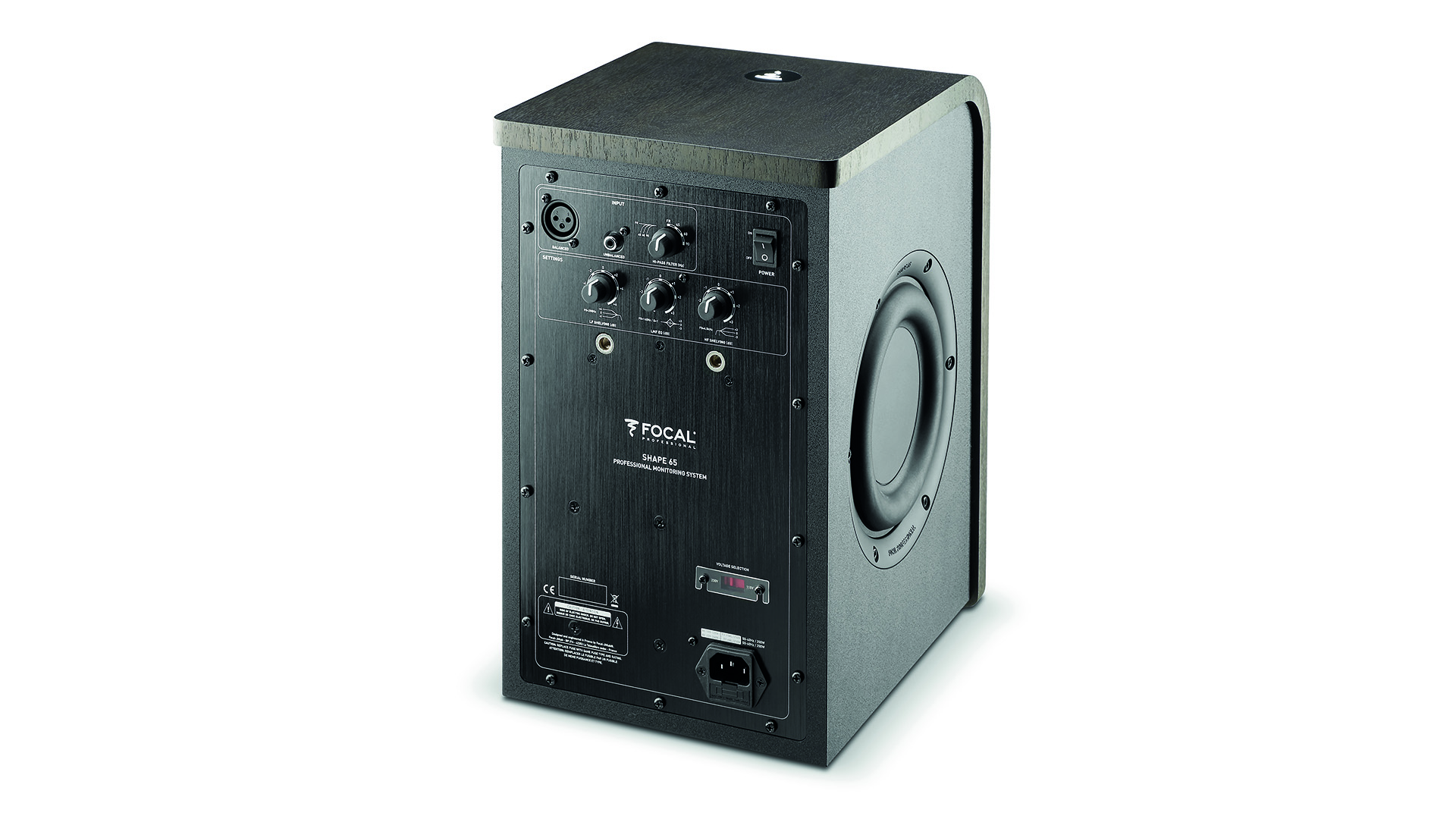What Hi-Fi? Verdict
As a window into your recording, you’ll struggle to find one cleaner – or perhaps less forgiving – than the Focal Shape 65
Pros
- +
Incredibly transparent
- +
Great for analysis
- +
Top stereo imaging
Cons
- -
Not expert timing
- -
Bass could be more textured
- -
Unforgiving tweeter
Why you can trust What Hi-Fi?
What’s the difference between a hi-fi speaker and a studio monitor? Sometimes very little, and sometimes quite a lot.
The Focal Shape 65 are far from the first pair of studio monitors we’ve tested here at What Hi-Fi? – we use a pair of passive monitors as our reference speakers, after all – but this is the first time we’ve reviewed a pair of nearfield monitors as just that, and not as a product that crosses over into the home audio sphere.
Though some might question whether our reviewers are even music fans, given some of our preferred test discs, there are musicians among us. And, with the shared expertise and experience, it isn’t that much of a stretch for us to review studio monitors such as these.
However, what is clear is that the Focal Shape 65 are not an alternative to the best active standmounters you might use alongside your music streamer or turntable; these are a different thing entirely.
Pricing
So at £600 ($899, AU$1314) per unit, we’re into the midrange as far as nearfield monitors go; but the Shape 65 is still at the affordable end of that spectrum, for what Focal describes as the reference speaker of its Shape line.
If you want the Shape character but for less, or in a smaller package, Focal also offers the Shape 40 and Shape 50. The Shape Twin, meanwhile, features two drivers sandwiching the same tweeter in a three-way design.
The Shape line itself is also in the centre of Focal’s studio monitor output, with the Alpha models catering for entry-level and the SM6 and SM9 sitting above.
The latest hi-fi, home cinema and tech news, reviews, buying advice and deals, direct to your inbox.
Build

These monitors aren’t cheap, especially when you consider they will account for probably only a fraction of the cost of your studio, so it shouldn’t go unnoticed how well made the Shape 65 are.

Rear ported No
Frequency response 40Hz - 35kHz
Inputs Balanced XLR; unbalanced RCA
Power 25W tweeter; 80W mid/bass
Dimensions (hwd) 35.5 x 22 x 28.5cm
Weight 8.5kg
There is a delicacy here that alludes to great craftsmanship. The smooth curve linking the Shape’s facade to its roof is a worthy silhouette for a speaker with this moniker, and its smoothness is echoed by the immaculate finish across the rest of this MDF cabinet and its walnut veneer.
The Shape 65 are practical as well as attractive, though. You may have noticed the dual passive radiators located on the side panels, in lieu of a reflex port, which allow for your monitors to be placed right up against the wall without any boominess.
In addition to that triumph is Focal’s forethought when it comes to stand-, wall- and ceiling-mounting. There are mounting mechanisms on the back and the underside of the monitor, meaning you can accommodate the Shape 65 pretty much anywhere without drilling into it or changing its structure.
It is, however, important to remember these are nearfield monitors designed for close listening in smaller rooms. Just because you could attach these to the roof of a converted chapel, it doesn’t mean you should.
Features

Focal has also worked hard to accommodate various listening positions with its drivers. Take the 25mm aluminium-magnesium tweeter, for example. The ‘M’ shape profile of this inverted dome tweeter means directivity is even less than that of a normal inverted dome, which in turn allows for more flexibility in terms of listening position. That’s ideal when space is at a premium, as will often be the case where the Shape 65 are used. What’s more, that 'M' also gives the dome greater rigidity, reducing unwanted distortion.
Sitting below that, the 16.5cm mid/bass unit – for reference, the Shape 40 use a 10cm version and the Shape 50's measures 12.5cm – uses a flax sandwich cone. It’s a combination of materials Focal has been using since 2013, where high-quality flax fibres are enclosed by two thin layers of glass fibre.
These materials offer high internal damping and high rigidity, while the flax is twice as light as fibreglass. Because Focal sources all its flax from France, which is the continent’s leading producer, it can also help keep costs down – for the company and subsequently the consumer.
That driver also makes use of Focal’s Neutral Inductance Circuit technology, which uses an optimised Faraday ring to combat the inherent instability of the magnetic field. The Tuned Mass Damper surround uses a pair of tubular rings, moulded onto the surround, to stabilise its dynamic behaviour and avoid deformation of the cone. Inside, there is a pair of Class A/B amplifiers feeding 80W to the mid/bass driver and 25W to the tweeter.
Turn the Shape 65 around and you’ll find balanced XLR and unbalanced RCA inputs – meaning you could technically connect any wired source to your monitor – along with a high-pass filter and an adjustable crossover set at 160Hz. There are also knobs for tweaking bass and treble, but it’s worth noting this is all manual; there is no one-button EQ tech or anything similar.
Sound

The Shape 65 requires at least 10 hours of running in, so don’t dishearten yourself by judging your mixes before then, but there’s no harm warming them up longer. We leave them on overnight before sitting down to listen.
Immediately you can hear every minute of work Focal has put into the Shape 65’s transparency and timbral precision. For the money, these monitors are exceptionally detailed through the midrange and treble.
Our music is pulled apart and inspected diligently, with no stumbled-over word or buzz of a microphone allowed to hide. As a critic, the Shape 65 is unrelenting; but as a tool, it is invaluable in that respect.
Stereo imaging is also good, allowing for easy placement of instruments within a mix, and as we shift the position of our pair of Shape 65 around, the work done by those M-shaped tweeters is evident. These Focals are extremely versatile in terms of the listening position, and shouldn’t be discounted on account of how you can fit them into your room or studio.
There isn’t a huge amount of bass weight – Focal has evidently been keen not to overstretch itself and muddy up the rest of the balance – but what is there is punchy and tight. Again, positioning is helped by those passive radiators, but we might call for a little more texture in the low end to match that presentation further up the register.

The treble is also quite sensitive. That isn’t necessarily a criticism, it just won’t be for everyone. Coarse recordings will be shown up immediately, which is ideal if that’s what you need, but it can be a bit wearing if you’re working on anything that requires less than sparkling top end.
The Shape 65’s presentation of low-level dynamics is another area that might divide. Were we testing hi-fi speakers, we may be critical of this reserved sense of expression, but in the case of studio monitors it will again be down to taste.
If you’re a musician or producer who doesn’t want the performance to get in the way of your mixing, then this is a character that could really suit. The Shape 65 won’t massage your ego or make your music sound better than it is, at least.
The main issue we have is with timing. In this regard, the Shape 65 cannot match its precision elsewhere. While less than expert timing in a hi-fi speaker might be unsavoury, here it leads to us changing what we’re doing in a recording or a mix; that is where it becomes less about preference and more of an objective issue.
If you are working mostly with sequencers or electronics you can quantise, this might of course be a minor issue. Like the low-level dynamics we mentioned, you can be sure your timing isn’t slipping in reality, even if that’s how it sounds coming from the speakers. However, with anything live, those slight aberrations can affect how the Shape 65 acts as a tool.
Verdict
That’s a shame because it’s all that stops the Shape 65 from being ideal for some. Detail levels are superb and even aspects such as the sensitive treble response and staid dynamics will work in the favour of many musicians and producers. As a tool, these monitors are hugely adept.
If you need a confidence boost you should look elsewhere, but if you can accept an honest analysis of your recordings then Focal has done a good job for the money.
SCORES
- Sound 4
- Features 5
- Build 5
MORE:
Read our guide to the best hi-fi speakers
Read all our Focal reviews
What Hi-Fi?, founded in 1976, is the world's leading independent guide to buying and owning hi-fi and home entertainment products. Our comprehensive tests help you buy the very best for your money, with our advice sections giving you step-by-step information on how to get even more from your music and movies. Everything is tested by our dedicated team of in-house reviewers in our custom-built test rooms in London, Reading and Bath. Our coveted five-star rating and Awards are recognised all over the world as the ultimate seal of approval, so you can buy with absolute confidence.

